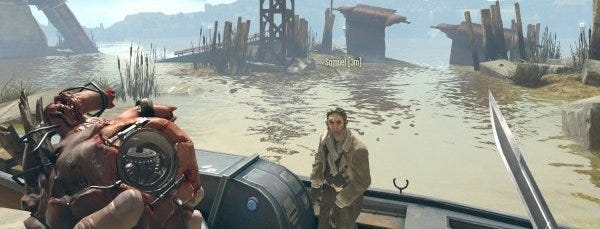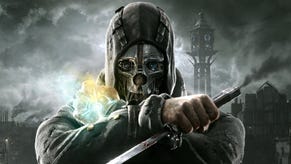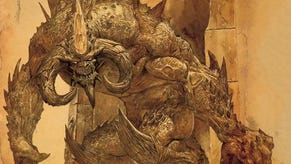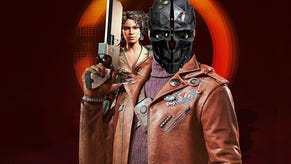The Gaming Pulse: Dissecting Dishonored’s Heart
Getting Pumped
There's no question that Dishonored's Heart deserves celebration. Fortunately RPS contributor Paul Walker has done that in fine style, digging in to what makes the object so significant to the game, and speaking to co-creative directors Harvey Smith and Raphael Colantonio about how it came to exist, and their feelings about its part in the game.
Dishonored's Heart is an object which lives up to its name in many ways. It breathes life into the game’s characters, imbues the city of Dunwall with soul, and helps the player to feel the melancholy tone which permeates all facets of its world. Characterised by the intersection of the mystical and the technological, it distills the very essence of the pseudo-Victorian steampunk landscape in which Dishonored’s tale unfolds. It is presented to the player as a navigation tool — a guide to lead players to the occult items littered throughout the fictional city of Dunwall. But, as co-creative directors Harvey Smith and Raphael Colantonio told me, “It also plays a part related to informing their decisions about when to apply violence or not, making it a really interesting, more subtle part of the power fantasy.” Here we start to get to grips with what it is the makes the Heart so compelling.
It is able to do all this because the Heart speaks to the player. It can be used to reveal the history of a particular place, or to unveil a character’s dark secrets. It may comment on a given individual’s personality, or it may tell you their most personal hopes and dreams. Occasionally, the Heart will even ruminate on its own origins, displaying a chilling semi-awareness. It does all this with a beautifully subtle tone which, while always resigned, is at turns lined with traces of contempt, warmth and sadness.
Smith and Colantonio explain that the multiple roles fulfilled by the Heart are the result of a process of evolution that reflects the always-changing dynamic of game development.
“Initially, the Heart was conceived as a means of locating assassination targets using vibration and sound mechanics," Smith and Colantonio say. "We thought about having it talk and feel alive, like it had its own agenda, similar to the Eye in Thief. So while planning for the Heart, we kicked around those concepts and a number of additional fictional ideas supporting it. But once we'd had enough people play the game, it was obvious that we needed something more direct in helping players find their way to the targets, so the team created a system for HUD markers that helped guide the player."
Arkane found that the Heart's role kept changing as they developed, but its narration was always there. “We went through many rounds of changes around navigation features," Smith and Colantonio continue. "And once we decided to let the player use the Heart to find Runes and Bone Charms, even that changed repeatedly as we experimented with how obscure or overt we wanted it. All along, we were also writing lines for the Heart, based on its perception of specific or general-case characters in the world. It served as a great way to reinforce our themes and helped differentiate the social classes in the game."
The developers' comments certainly chime with my experience of playing Dishonored. The Heart does do a great job of differentiating between social classes and giving focus to related themes of justice, power and equality. One of the most striking examples of the way in which the Heart is able to do this is to be found in the stories which it tells regarding servants at the player’s base of operations. In keeping with the Victorian-like setting of Dishonored, the service staff will not offer much to their perceived social better in conversation, and generally limit themselves to polite trivialities. It’s logical, but it leaves these characters with little to make you feel that they are real people and means that they are perfectly placed to fade into obscurity. This is where the Heart comes in.
Through the Heart, I know that one young woman dreams of a life on the seas as a whaler while she works herself to the bone. She is also simultaneously aware that she will never be able to fulfill this dream because of her sex. I know that another servant’s exterior calm belies an inner turmoil — the hand life has dealt her leaves her contemplating suicide on a daily basis. By giving me these insights the Heart renders these characters tangible. They become more than props used to fill out a fictional world. They become people with personal tragedies, frustrated desires, hopes and regrets.
As I infiltrate the gated communities in which the privileged are ensconced in relative safety and comfort, insulated from the decay and disease which envelopes the rest of Dunwall’s population in abject misery, it is the humanity of those at the bottom of the social ladder which makes this injustice matter. By humanising Dunwall’s inhabitants, the Heart makes Dishonored’s social dynamics relevant.
“Themes of how you use the power you’re given — whether its authority, social class and privilege, or the allegorical supernatural powers — are close to the centre of the game and the world”, Smith and Colantonio told me. “The Heart seemed like a good way to focus on the emotional core.”
Indeed, without the Heart, you would be left with little more than a series of signifiers — this area is dilapidated so these people are poor, this person is well dressed so they are rich, and so on. The Heart adds a touch of nuance by providing an emotional and personal context to these signifiers with the little secrets it draws out from Dishonored’s characters. It does so with degree of subtlety which would be lost were it necessary for NPCs to blurt out their most personal thoughts to someone they barely know.
It’s not just the depth that the Heart gives to Dishonored’s characters which makes it so important, but also what it is able to do for the game’s locations. One mission requires you to traverse a heavily guarded steel bridge. Were it not for the Heart, this bridge would be nothing but a rather stale backdrop, an arbitrary place for play to happen. But the Heart speaks, telling the player, “I smell bones in these pylons, blood beneath the stone blocks. Men died building this structure.” It tells you that, “abandoned woman, ruined men, plague victims have all leapt from here.” The bridge now becomes a symbol of elitist power, an avatar of the social system which sends the vulnerable to their death through exploitation or despair. The Heart gives the bridge a sense of place within its fictional world, tethers it to that recurring theme of social inequality with which Dishonored is so concerned and uses the location as an instrument through which the game’s tragic and melancholy tone continues to reverberate.
I find myself returning to the word "subtlety" again. Dishonored doesn’t scream, “Look! Look at this rich man! Being all horrible to these humble poor people!”. The beauty of the Heart is that it circumvents the need to frame the injustice of Dishonored’s social system in such a ham-fisted way. Just like the real world, injustice is often not so visible, it can be hidden behind social conventions, institutions and culture — that’s what the Heart captures so brilliantly by extracting little stories from the world around you. The Heart ensures that the tragedy of Dishonored’s world is more than a result of the machinations of a cartoonish antagonist (though there certainly is an element of that in the game). It is also about the way that injustice is ingrained into the social system itself, literally part of the fabric of Dishonored’s reality as the example of the bridge demonstrates. In this way, the Heart makes a sophisticated point about the nature of inequality and gives the game a class consciousness which supplements the more familiar tale of good versus evil told in the game’s main narrative.
At this point, it’s probably becoming clear that the Heart plays somewhat of a peripheral role. It is never used as an essential plot point in the games narrative and the player doesn’t have to use it to get any additional information about the world if they don’t want to. But despite its place on the sidelines, it is unquestionably a vital part of the game’s world and a brilliant piece of design. Given the degree to which the Heart enriches the experience of playing Dishonored, I wondered if Smith and Colantonio were concerned that players might neglect to use the Heart and miss out on so much.
“Occasionally [we were worried], but it's part of what we love in games: being empowered to approach the game expressively means the experience feels like yours, which is one of our big creative goals. So we suppress that worry, choosing to trust the players as much as possible. We're big fans of pull-based narrative. Whenever the player is in control of the pacing and is engaged, games rich with story content feel better. If I want to know more, I pursue it. And that's yet another way in which no two players will have the same experience."
The pair revealed they were a little surprised to discover how much people liked the Heart. To be sure, there are many other things that make Dishonored exceptional: the joy of exploration and discovery, the satisfaction of successfully implementing a carefully laid plan to sneak through an area unseen, the unique and invigorating experiences which Dishonored’s heady blend of mechanics combine to create. But for me, the stories and secrets that the Heart extracts from the world around the player, and the way in which these stories enhance that world, is just as important a factor in Dishonored’s success — certainly more so that the functional role which the Heart performs as a navigational aid.
It’s clear that Smith and Colantonio are passionate about giving the player freedom and in this sense the Heart seems indicative of the way Arkane approach game design. “This undertaking belongs to you because of how you approach many different things. Not just the pathway, the powers, the moral approach, or the sequence, but also how much of the game you see and which parts interest you,” they explain. “By contrast, being railroaded through dialogue — the same conversations everyone else hears — is not as interesting because it never feels like the player drove it. We do that at times too, but we prefer the pull-based method where the player chooses what to reach for."



















